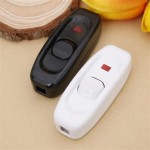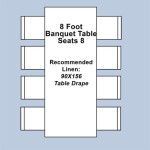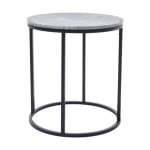Pool Table Dining Conversions: Maximizing Space and Functionality
In contemporary living spaces, particularly those characterized by compact dimensions, the efficient utilization of square footage is paramount. Pool table dining conversions represent a pragmatic approach to maximizing functionality without sacrificing recreational amenities or formal dining capabilities. By integrating a convertible tabletop system, a standard pool table can be readily transformed into a dining surface, offering versatility to homeowners and renters alike.
The concept of a pool table dining conversion hinges on the principle of multi-purpose furniture. It acknowledges the sporadic nature of pool table usage while recognizing the consistent need for a dining area. Rather than dedicating space solely for either a pool table or a dining table, a convertible design allows for both functions to coexist within the same footprint. This is particularly advantageous in apartments, condominiums, or smaller homes where space is at a premium.
The success of a pool table dining conversion depends on several key factors, including the quality of the materials used, the ease of conversion between modes, the stability of the dining surface, and the overall aesthetic integration of the design. A poorly executed conversion can result in an unstable dining surface, a cumbersome conversion process, or a visually unappealing piece of furniture. Therefore, careful consideration must be given to these factors when selecting a pool table dining conversion system.
Key Point 1: Understanding the Components and Mechanics
A typical pool table dining conversion system consists of several key components. The primary element is the conversion tabletop itself, which is designed to fit snugly over the pool table playing surface, transforming it into a flat, level dining area. These tabletops are commonly constructed from wood, such as solid hardwood, plywood, or MDF (Medium-Density Fiberboard), and are often finished with a durable veneer or laminate to resist scratches, spills, and heat. The quality of the table top is crucial for a fulfilling dining experience.
Beneath the tabletop, a support structure is typically employed to provide stability and prevent the tabletop from sagging or warping under the weight of dishes, food, and diners. This support structure may consist of a series of interlocking wooden rails, metal frames, or a combination of both. The design and construction of the support structure are critical for ensuring the long-term durability and stability of the dining surface.
The conversion process itself often involves the use of latches, hinges, or other mechanical fasteners to secure the tabletop to the pool table frame. The ease of use of these mechanisms is a significant factor in the overall user experience. A well-designed system should allow for a quick and effortless transition between pool table and dining table modes, without requiring specialized tools or excessive physical exertion. Some systems also incorporate storage solutions for the tabletop when the pool table is in use, such as wall-mounted racks or under-table compartments, avoiding clutter and ensuring the tabletop remains in good condition.
Furthermore, padding or felt lining is often included on the underside of the tabletop to protect the pool table felt from scratches or damage during the conversion process. This seemingly minor detail is essential for preserving the integrity of the pool table's playing surface and ensuring its longevity.
Key Point 2: Evaluating Materials and Construction Quality
The choice of materials and the quality of construction are paramount in determining the overall performance and longevity of a pool table dining conversion system. Inferior materials or shoddy workmanship can lead to a range of problems, including warping, sagging, instability, and premature wear and tear. Therefore, a thorough evaluation of these factors is essential before making a purchase.
Hardwood tabletops, such as those made from oak, maple, or cherry, are generally considered to be the most durable and aesthetically pleasing option. These materials are known for their strength, stability, and resistance to scratches and dents. However, hardwood tabletops can be relatively expensive compared to other options.
Plywood and MDF tabletops offer a more affordable alternative, but their durability and resistance to moisture and warping may be lower than that of hardwood. If selecting a plywood or MDF tabletop, it is crucial to ensure that it is made from high-quality materials and that it is properly sealed and finished to protect it from the elements.
The finish applied to the tabletop also plays a significant role in its durability and aesthetic appeal. A durable, scratch-resistant finish, such as a polyurethane or lacquer, is essential for protecting the tabletop from everyday wear and tear. The finish should also be resistant to spills, heat, and other common hazards associated with dining. Ideally, the finish should match or complement the existing finish of the pool table to create a cohesive and visually appealing aesthetic.
The construction of the support structure beneath the tabletop is equally important. A robust and well-engineered support structure is essential for preventing the tabletop from sagging or warping under the weight of dishes, food, and diners. The support structure should be made from high-quality materials, such as solid wood or metal, and it should be securely fastened to the tabletop to ensure maximum stability.
Key Point 3: Addressing Stability and Leveling Considerations
Ensuring a stable and level dining surface is crucial for a positive dining experience. A wobbly or uneven tabletop can be frustrating and even dangerous, as it can lead to spills and accidents. Therefore, careful attention must be paid to leveling and stability when setting up a pool table dining conversion system.
Before installing the conversion tabletop, it is essential to ensure that the pool table itself is properly leveled. Most pool tables have adjustable feet that can be used to fine-tune the table's height and ensure that it is perfectly level. A spirit level should be used to check the levelness of the playing surface in multiple directions. Once the pool table is properly leveled, the conversion tabletop can be installed.
Even with a properly leveled pool table, the conversion tabletop may still require some minor adjustments to ensure that it is perfectly level. This can be accomplished by using shims or adjustable feet on the tabletop itself. Shims are thin pieces of wood or plastic that can be inserted between the tabletop and the pool table frame to correct any minor discrepancies in height. Adjustable feet, similar to those found on the pool table itself, allow for more precise adjustments to the tabletop's height.
To further enhance stability, some conversion systems incorporate locking mechanisms that secure the tabletop to the pool table frame. These locking mechanisms prevent the tabletop from shifting or sliding during use, providing a more stable and secure dining surface. They are especially useful if the pool table is located on an uneven floor or if it is subject to frequent movement.
Regularly checking the levelness and stability of the dining surface is also recommended. Over time, the pool table or the conversion tabletop may shift slightly, requiring minor adjustments to maintain a level and stable dining surface. A quick visual inspection and the use of a spirit level can help identify any potential issues before they become major problems.
In summary, a pool table dining conversion offers a practical solution for individuals seeking to optimize space utilization within their homes. The selection of a suitable system requires careful deliberation of components and mechanics, material quality, and the measures taken to ensure stability and levelness. When these elements are carefully considered, a pool table dining conversion can seamlessly blend recreational and dining functions, enhancing the overall utility and value of the living space.

Carmel Convertible Billiard Dining Table Presidential Billiards

Convertible Dining Insert

Dining Conversion

Convertable Billiard Dining Tables Presidential Billiards

This Company Makes Elegant Dining Tables That Convert Into Pool

Carmel Convertible Billiard Dining Table Presidential Billiards

Alta Dining Conversion Top Charcoal American Heritage Billiards

Chairs For Convertible Pool Tables Neon

Pool Table Conversion Dining Top Only

Cornilleau Hyphen Outdoor Pool Table Dining Conversion Top Included Blatt Billiards








